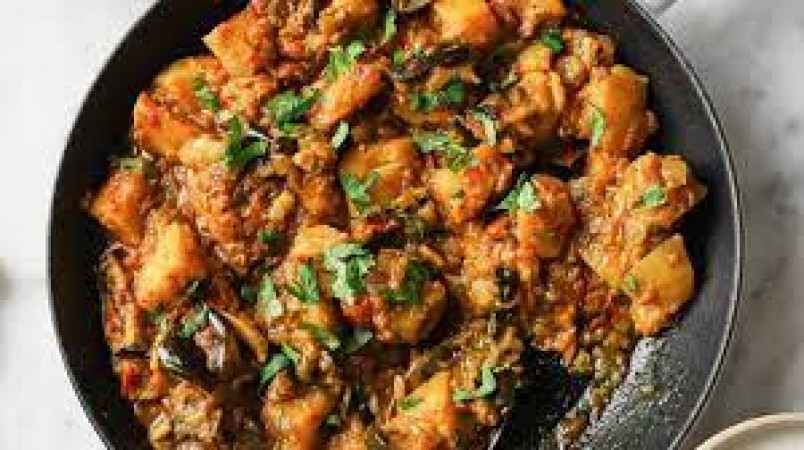
In the vast tapestry of global culinary delights, an unexpected revelation has surfaced. A popular vegetable, a quintessential part of Indian kitchens, has found itself on a list it never aspired to be—a list of the world's top 100 bad foods. This surprising classification raises questions about a vegetable that has been a culinary cornerstone in India for generations.
Upon closer inspection of the nutritional profile, a dissonance emerges, challenging the conventional wisdom that has surrounded this vegetable. How did a food item celebrated for its versatility in Indian cuisine end up on a list that questions its health benefits? Exploring the intricacies of its nutritional composition unveils a tale of contradictions.
Despite its widespread use and popularity, this seemingly innocuous vegetable harbors hidden health hazards. Understanding these risks becomes imperative for those who regularly incorporate it into their meals. What lies beneath the surface, and how might it be affecting our health in ways we never imagined?
Delving deeper, we examine the potential impact on overall well-being. Could this seemingly harmless vegetable be contributing to health concerns that have been overlooked? Unraveling the intricate relationship between consumption and well-being provides crucial insights.
How did a vegetable that has been a kitchen staple in India gain notoriety on a global scale? Unmasking its journey from local fame to international scrutiny reveals surprising twists. The globalization of culinary trends brings with it both accolades and challenges for traditional ingredients.
The dichotomy between its culinary popularity and the emerging nutritional concerns poses a dilemma for both chefs and health enthusiasts. Can this vegetable still find a place on our plates despite the shadow it now casts? Balancing tradition with modern health considerations becomes an intricate dance.
The inclusion of this Indian vegetable in the list of bad foods has sent shockwaves through the culinary world. How are international chefs and food enthusiasts reacting to this revelation? The globalized nature of food trends means that a culinary shock in one part of the world resonates globally.
Beyond its global impact, there are repercussions closer to home. How does this revelation affect the perception of Indian cuisine, known for its rich tapestry of flavors? The intertwining of cultural identity and culinary traditions faces a test in the wake of this global scrutiny.
Nutritionists find themselves in a challenging position as they navigate the controversy surrounding this vegetable. How do they advise individuals who have grown up relishing its taste? Striking a balance between cultural culinary heritage and modern health recommendations becomes a complex task.
Amidst the debate, there is a growing call for transparency in the food industry. Consumers demand clearer information about the nutritional aspects of the vegetables they consume. The call for transparency extends beyond this particular vegetable, encompassing a broader need for clarity in food labeling and information.
As individuals, chefs, and health enthusiasts grapple with this revelation, there's a collective need to rethink our dietary choices. How can we strike a balance between culinary traditions and nutritional well-being? The evolving landscape of dietary recommendations prompts a reassessment of our relationship with the food we consume.
Are there alternative vegetables that can seamlessly replace the infamous one on our plates without compromising taste? Exploring healthier options becomes paramount. As consumers become more health-conscious, the culinary world adapts by offering alternatives that align with evolving dietary preferences. In the midst of this culinary controversy, one thing is clear—the famous Indian vegetable, once celebrated for its taste, now finds itself at the center of a global discourse on health and nutrition. As we navigate this revelation, the food industry, health experts, and consumers must collectively seek a path forward that preserves both the rich flavors of Indian cuisine and the well-being of those who savor it.
How to Manage Syphilis-Related Hair Loss: Insights and Treatment
Centre Requests Surrogacy Data from States to Assess New Regulations